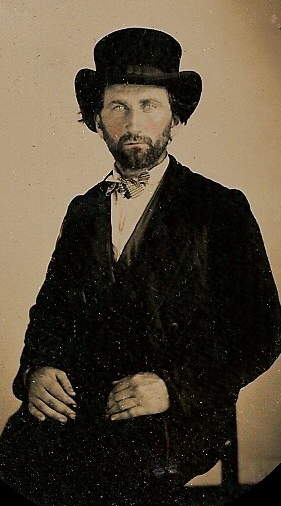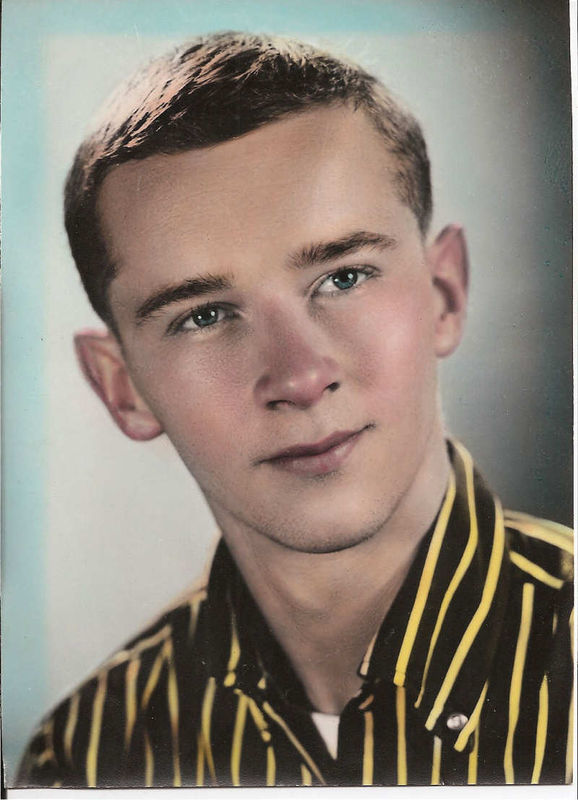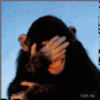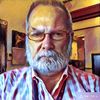What do I have?
Sep 12, 2012 08:20:09 #
I have been doing a lot of scanning of old photographs to give to my cousin who asked for my help in doing our family geneology. I did one last night and was very surprised when I removed it from its case to find it was all glass. I had always thought it was a tintype with a protective glass covering.It appears to be made from two sheets of glass sandwiched together with the image in between them. The gentleman in the photo has had some color added to his face by some process unknown to me. I suspect I have an ambrotype but am not totally sure. Can anyone help me verify this?
A scan of the photo

Sep 12, 2012 08:41:23 #
Back in the 60s you'd put a photo on matte paper and use photo colors to color your photos. Probably the same back then.
Here's one I hand did when I was in Viet Nam. Course I was young then so I don't look like that now. I wish I did.
Sarge69
Here's one I hand did when I was in Viet Nam. Course I was young then so I don't look like that now. I wish I did.
Sarge69
Taken and colored in Viet Nam 1966 ?

Sep 12, 2012 09:26:50 #
I used to tinker with coloring photos back in the day. If this is an ambrotype, which I suspect it is it must have been a delicate process as the image itself is on a very fragile base. I know what you mean about how we looked back then. There is a portrait of me in uniform when I was 18 that hangs in our hallway and age has not been kind. Thanks for replying.
Sep 12, 2012 09:38:56 #
Sep 12, 2012 12:03:50 #
GoofyNewfie wrote:
Navion Mentor?
No it is a Beechcraft T34B-Mentor, a primary trainer used by the Navy. In my time it had a Continental 0-470, 6 cylinder, horizontally opposed engine. It has long ago been updated to a turboprop with the same airframe and is still in use by the Navy. The Air Force also used a similar version.
Sep 12, 2012 12:13:11 #
dragonfist wrote:
No it is a Beechcraft T34B-Mentor, a primary trainer used by the Navy. In my time it had a Continental 0-470, 6 cylinder, horizontally opposed engine. It has long ago been updated to a turboprop with the same airframe and is still in use by the Navy. The Air Force also used a similar version.
GoofyNewfie wrote:
Navion Mentor?
No it is a Beechcraft T34B-Mentor, a primary trainer used by the Navy. In my time it had a Continental 0-470, 6 cylinder, horizontally opposed engine. It has long ago been updated to a turboprop with the same airframe and is still in use by the Navy. The Air Force also used a similar version.
I see that now- thanks.
I got a ride in one like you have in your avatar about 10 years ago...ex Navy trainers that belonged to a retired military-only flying club.
Sorry- I can't help you with the old photo.
Sep 12, 2012 12:31:38 #
GoofyNewfie wrote:
quote=dragonfist quote=GoofyNewfie Navion Mentor... (show quote)
Yes when I was in they were selling off the ones with high flying hours on them. Late 50's. early 60's. The only catch was that they had to be bought in lots of six at $3000 per lot. Sounds cheap but even then parts were expensive and unless you could find 5 other guys that wanted one it wasn't such a great bargain.
I flew in them quite a bit as I was an Aviation Machinists Mate and twisted a lot of wrenchs on them. We had about 75 of them in our training squadron. They were fun to do aerobatics in. The only maneuver they were restricted from
was an outside loop. We had two Marine Lts. that didn't believe it and the wings came off and they went to meet their maker. We would go up on the test hop after we finished repairing them and the pilots would turn the controls over to us. I got fairly good with the aerobatics.
Sep 12, 2012 15:12:32 #
Sep 12, 2012 15:28:08 #
Festina Lente wrote:
Kinda flew away from the subject didn't we?
Surely you understand.
I did mention that I couldn't help with the photo- doesn't that count?
:lol:
Hand painted daguerreotype?
http://vrestrepo.com/two/page5.html
some of these loook similar:
http://www.flickriver.com/groups/handtinted/pool/interesting/
Sep 12, 2012 15:47:44 #
Well, getting back to the subject... ;-/}
I think the process of using the glass plates was to allow the projection of the image onto a wall. In the 1800s there would be arcades where you could find a vendor charging 5¢ or 10¢ to show images of far-away lands. The images had to be in glass and somewhat transparent, as in a negative or slide, in order to be projected.
I think the process of using the glass plates was to allow the projection of the image onto a wall. In the 1800s there would be arcades where you could find a vendor charging 5¢ or 10¢ to show images of far-away lands. The images had to be in glass and somewhat transparent, as in a negative or slide, in order to be projected.
Sep 12, 2012 17:49:09 #
Festina Lente wrote:
Kinda flew away from the subject didn't we?
You know what they say, "Birds of a feather."
Sep 12, 2012 19:10:15 #
I did some more research and I am leaning to thinking it is an ambrotype. According to my research they painted the glass plate with an albumen based, light sensitive mixture and when exposed to light it became a negative. They then covered the negative with a glass plate to protect the negative and then either painted the back of the glass the negative was on with a black shellac or placed it in a case with a black velvet backing. This then turned it into a positive for viewing. I pulled mine out of the case and checked it again and sure enough the back of the negative glass is painted black. Hopefully I will be able to find someone close by expert enough to confirm my hypothesis. The thing is that there were so many ways of making photographs back then that a similar process may have been used. I am still amazed at how they managed to color the skin so well as the photo is quite small and it would have taken a very steady hand to do this. Also I would love to find out exactly how they added the color and what the coloring agent was.
Sep 13, 2012 05:52:24 #
Without close examination of the original it's difficult to decide whether it's a Daguerreotype or an Ambrotype as both processes were very similar, the latter being subject to a lot more post production 'enhancement'.
In both processes the finished product was the same material as exposed in the camera (i.e. no negative for multiple prints) and often protected by sandwiching the original Collodion plate with another sheet of glass.
I think you can be sure it's not a Ferrotype or Tintype, unless the backing is a metal plate.
In both processes the finished product was the same material as exposed in the camera (i.e. no negative for multiple prints) and often protected by sandwiching the original Collodion plate with another sheet of glass.
I think you can be sure it's not a Ferrotype or Tintype, unless the backing is a metal plate.
Sep 13, 2012 06:16:26 #
krispix wrote:
Without close examination of the original it's dif... (show quote)
Thanks krispix. There is no metal just glass plates. I am thinking this is an ambrotype as both his face and hands are skin color and a little rouge has been added to his face. More post production enhancement as you said.
Sep 13, 2012 10:37:04 #
alliebess
Loc: suburban Philadelphia
dragonfist wrote:
quote=krispix Without close examination of the or... (show quote)
You would easily recognize a daguerreotype-it would be on a metal plate and highly reflective. Ambrotypes, as you have noted, are negatives, usually somewhat under exposed, which read as positive when placed against a black background. Hand coloring of photographs was frequently done by women; it was assumed that they were more skillful at detailed work. I've not seen anything explaining what pigments were used, but I assume that the colorists would use fine, soft brushes and artist's paints, pretty much like we do today on paper based photos.
If you want to reply, then register here. Registration is free and your account is created instantly, so you can post right away.





